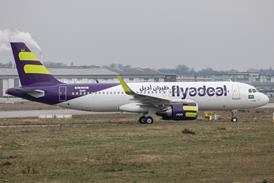STEWART PENNEY
Can Europe bridge the transatlantic divide with involvement in US missile defence?
Listening to Boeing's announcements at Farnborough 2002 of tie-ups with Alenia Spazio, BAE Systems and EADS, it was easy to forget that the deals were for co-operation on ballistic missile defence programmes and not the creation of transatlantic industrial partnerships.
Boeing is one of the "national team" prime contractors to the US Missile Defence Agency (MDA), responsible for systems engineering and integration. Lockheed Martin, the other national team leader, is responsible for battle management and command and control. Boeing is also lead systems integrator on the MDA's Ground-Based Midcourse Defense System - one tier of the USA's planned multilayer architecture.
Boeing's tie-up with EADS is the first time the US and European aerospace giants have signed a deal at a corporate level. Their previous agreements - such as those on developing the X-31 experimental thrust-vectoring aircraft and marketing the European MBDA Meteor beyond visual range air-to-air missile - have been made at the business unit level.
Language from the companies' senior executives emphasised the opportunity the agreements provide for developing transatlantic co-operation. Boeing chairman Phil Condit said: "This agreement allows Boeing and EADS to offer significant contribution to current NATO programmes and provides an important industrial framework for both sides of the Atlantic."
EADS co-chief executives Philippe Camus and Rainer Hertrich share Condit's view. "BMD is a great political and industrial opportunity to further the co-operation between transatlantic government and industry - and even beyond traditional transatlantic links," said Camus.
"This transatlantic defence market must be characterised by a less restrictive flow of goods and services within it and by effective common safeguards against unauthorised transfers to third parties," said Hertrich. "Boeing and EADS oppose the idea of a Fortress America or a Fortress Europe. Instead we ask our governments to consider an overhaul of export regulations."
Hertrich added: "A significant number of national regulations governing defence trade and co-operation are the residue of the Cold War. They are made obsolete and counterproductive by the internationalisation of industrial operations and commercialisation of defence components."
Although USMDA head Lt Gen Ronald Kadish has invited European industry to join the team, whether the respective governments will heed industry's call remains to be seen, but will become clearer as France, Germany and Spain begin negotiating technical assistance agreements (TAAs) with the USA. These security frameworks are needed before both sides can exchange information.
With its substantial North American business, BAE Systems is not reliant on the negotiation of a TAA before it can start missile defence work with Boeing. BAE North America is already involved in a number of BMD activities, but participation of the company's UK elements will require a TAA.
BAE group marketing director Mike Rouse said the memorandum of understanding with Boeing "covers a range of opportunities, but the US nationals get off the blocks quicker".
Rouse said the BMD programme is like the USA's "Star Wars" Strategic Defense Initiative in the 1980s: "[It] will drive technology in the industry; we can't not be involved."
The UK does not have a formal position on BMD, but Rouse said BAE has kept the government informed of its talks with Boeing and London is "not stopping the export of UK technology".
Sceptics accused Boeing of signing the agreements to secure a back door into Europe for the US concept of ballistic missile defence. BMD has not been universally welcomed in Europe and enticing industry to join the US programme would bring national lobbying pressure to bear on European governments.
BMD does not have the same high profile in Europe as it does in the USA, Hertrich acknowledged. "In Europe we are still lacking public dialogue and cross-border discussion about defence in general and missile defence in particular."
"It's much less Machiavellian than that," said Boeing president missile defence systems Jim Evatt. "We're trying to work the technical issues-we've been asked to do the architecture design for US deployed forces. Once we are down that road we will need access to all technologies, so we need the agreements and TAAs."
Regardless of calls for transatlantic co-operation, any European BMD system is likely to use locally developed sensors and weapons, modified for a common network applicable for national or deployable operations against short-, medium- and long-range threats. "We would like to understand the suppliers' capabilities and how they could be used, but it is clearly up to governments how they would be used," Evatt says.
Source: Flight International























